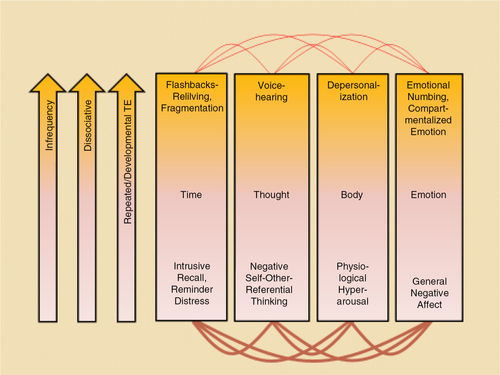Figures & data
Fig. 1 A summary of the 4-D model that categorizes symptoms of trauma-related psychopathology into (1) those that occur within normal waking consciousness and (2) those that are dissociative and are associated with trauma-related altered states of consciousness (TRASC) along four dimensions: (1) time; (2) thought; (3) body; and (4) emotion. The bottom pink part of the boxes indicates non-dissociative processes and normal waking consciousness, whereas the orange part of the boxes denote dissociative processes and TRASC. The first arrow (infrequency) indicates that the experience of TRASC is hypothesized to be less common than presentations of normal waking consciousness given that states of normal waking consciousness, by definition, are the most common phenomenological state of human beings. It should be noted that the four dimensions of consciousness are not mutually exclusive, but may refer to the same phenomena viewed from different perspectives (e.g., depersonalisation can manifest itself both in the dimension body and emotion). Copied with permission from Frewen and Lanius (Citation2015).

